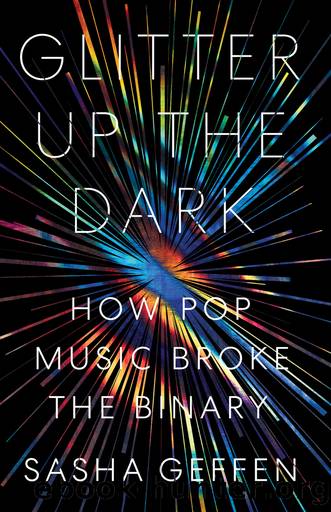Glitter Up the Dark by Sasha Geffen

Author:Sasha Geffen [Geffen, Sasha]
Language: eng
Format: epub
Publisher: University of Texas Press
Published: 2019-08-14T16:00:00+00:00
8
INFINITE UTOPIA
Queer Time in Disco and House
There was only one clock at the Loft, an old wooden timepiece with a single hand, and soon enough it broke down, as if it had buckled under the weight of what was transpiring around it. It was a fitting enough symbol: the ad hoc dance club in New York’s Greenwich Village didn’t acknowledge time. David Mancuso, DJ and presider over the space, which doubled during the week as his home, sent out invitations to his weekly dance party illustrated with Salvador Dali’s The Persistence of Memory: melted watch faces slipping across a surrealist landscape. Time was a construct and it had no sway inside the walls of the Loft. “Once you walked into the Loft you were cut off from the outside world,” said Mancuso. “You got into a timeless, mindless state.”1
At a time when gay clubs were still illegal in New York (for every three men in a club, there legally had to be one woman, so as to discourage “all-male dancing”), the Loft broke ground as one of the first underground dance spaces in New York. A minor discotheque craze, imported from Paris, had bubbled through the city in the ’60s, but it wasn’t until the ’70s that DJing emerged as an art form in its own right, popular first in primarily gay spaces and then across urban America as a whole. The Loft helped set the mold for the subterranean dance party. Intended as a site of utopian gatherings, it had no bar, though it did offer partygoers free, organic food. Mancuso charged an entry fee to help pay for rent and overhead, but he never turned anyone away for lack of funds. The point was the music, which played loud enough to melt away the outside world.
Frankie Knuckles did not have an invitation to the Loft the first time he attended one of Mancuso’s parties, but he knew Larry Levan, and Levan knew the woman working the door. The two friends skipped the line, walked in, and found themselves transported. “It was unlike anything I’d ever seen before in my life,” Knuckles said. Not only was the music “the absolute best,” the crowd seemed unfixed and permeable.2 Like Levan and Knuckles, many dancers at the Loft were black and gay, but revelers of all stripes mingled there. The markers that distinguished individuals in the world outside the Loft seemed to soften and fall away within its walls. People were no longer differentiated and siloed, but part of something larger than themselves. “Unable to avoid body contact on all sides, individual dancers had little choice but to dissolve into the amorphous whole, and, as the distinctions between self and other collapsed, they relinquished their socialized desire for independence and separation,” wrote Tim Lawrence in Love Saves the Day.3
Levan and Knuckles had met through the Harlem drag community, introduced by a drag queen named Gerald. Levan sewed dresses for the House of Wong, one of many drag ball collectives named for fashion designers that would compete against each other on the dance floor.
Download
This site does not store any files on its server. We only index and link to content provided by other sites. Please contact the content providers to delete copyright contents if any and email us, we'll remove relevant links or contents immediately.
Wonder by R.J. Palacio(8430)
Mastering Adobe Animate 2023 - Third Edition by Joseph Labrecque(3720)
Unlabel: Selling You Without Selling Out by Marc Ecko(3574)
Ogilvy on Advertising by David Ogilvy(3485)
Hidden Persuasion: 33 psychological influence techniques in advertising by Marc Andrews & Matthijs van Leeuwen & Rick van Baaren(3454)
Drawing Cutting Edge Anatomy by Christopher Hart(3440)
The Pixar Touch by David A. Price(3347)
POP by Steven Heller(3298)
The Code Book by Simon Singh(3057)
The Art of War Visualized by Jessica Hagy(2932)
Slugfest by Reed Tucker(2924)
The Curated Closet by Anuschka Rees(2897)
Rapid Viz: A New Method for the Rapid Visualization of Ideas by Kurt Hanks & Larry Belliston(2815)
Stacked Decks by The Rotenberg Collection(2796)
365 Days of Wonder by R.J. Palacio(2737)
The Wardrobe Wakeup by Lois Joy Johnson(2717)
Keep Going by Austin Kleon(2682)
Tattoo Art by Doralba Picerno(2583)
Tell Me More by Kelly Corrigan(2579)
